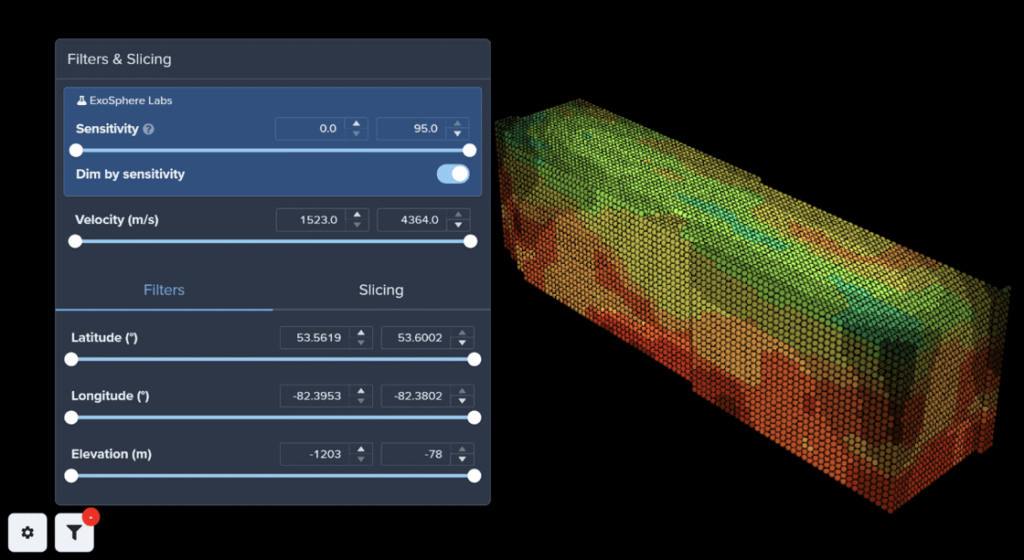Fleet Space Technologies, a leading Australian space company, has announced three innovative features to its mineral exploration technology, EXOSPHERE BY FLEET®, each purpose-built to enhance the agility and accuracy of data-driven exploration efforts worldwide.
Starting today, for all in-progress or future surveys, exploration customers will be able to download several new data intelligence assets on-demand from the ExoSphere platform that will deliver greater insights into ambient noise conditions, data quality and confidence levels across different parts of their 3D model, the company says.
Leveraging Fleet’s constellation of low Earth orbit satellites and the latest advances in passive seismic array technology, EXOSPHERE has rapidly disrupted the mineral exploration industry by reducing the time it takes to receive an actionable 3D model of a survey area from months or years to a matter of days – with near-zero environmental impact, Fleet says. Over 30 global exploration companies have used the technology to conduct surveys on a variety of commodity types across 5 continents, including Rio Tinto, Barrick Gold and Core Lithium, among many others.
Flavia Tata Nardini, CEO of Fleet Space Technologies, said: “We have arrived at an inflection point in humanity’s journey towards renewable energy. The mineral exploration industry is on the brink of unprecedented transformation as shallow discoveries are exhausted and demand for critical minerals needed for the energy transition continue to intensify. Fleet’s space-enabled EXOSPHERE technology has demonstrated a path to scale critical mineral exploration globally while also helping to reduce environmental impact, which is the only approach that will enable humanity to reach its net-zero ambitions over the coming decades.”
Traditionally, data acquisition and processing from geophysical surveys can take years or months before they can be leveraged as part of any exploration campaign. This has made it difficult for field teams to make quick operational decisions on-site and home in on new waves of discoveries. As global demand for critical minerals intensifies, advances at the intersection of space technology and geophysics are helping the exploration industry to become more data-driven and agile in a rapidly changing landscape, the company says.
Fleet brings together the benefits of satellite connectivity, remote geophysical data acquisition, and near real-time data processing to deliver actionable 3D models of the Earth’s subsurface for customers around the world, it says. With today’s announcement, Fleet has added several new features to its ExoSphere platform which include the Sensitivity Model, Data Processing Report, and Source Data Pack.
Customers can now access a Sensitivity Model (pictured above) to help them visualise and quantify confidence levels for every 3D model that is generated. This will provide customers with a relative indicator of the likely resolution and quality across different parts of the model, highlighting areas on a spectrum from higher to lower confidence. Ultimately, the Sensitivity Model will give customers an enhanced view into the confidence levels about potential subsurface findings in addition to areas of the model that would benefit from further surveying.
Featuring 14 technical charts, data processing parameters, and an explanatory narrative, the Data Processing Report is designed to give customers enhanced insight about the ambient noise conditions of the survey, data quality, and the steps taken to generate their 3D model.
Edge-processed data from the passive seismic sensors, called Geodes, used within a customer’s survey area will be downloadable on-demand from the ExoSphere platform as a Source Data Pack. This will enable customers to re-process the data using different geophysical tools or update their existing 3D velocity model with additional insights they unlock as part of their exploration efforts in the future.
Hemant Chaurasia, Chief Product Officer at Fleet, added: “Space-enabled technologies in the field today will profoundly shape the future of mineral exploration. With over 150 EXOSPHERE surveys completed across five continents, it’s clear that near-real time access to 3D velocity models, combined with these new EXOSPHERE features announced today, are unlocking new data-driven approaches that reduce the time, resources, and trial-and-error needed to build valuable subsurface insight and accelerate mineral discovery. This will be critical for the mineral exploration industry as we work towards the renewable energy future that our world so desperately needs.”











